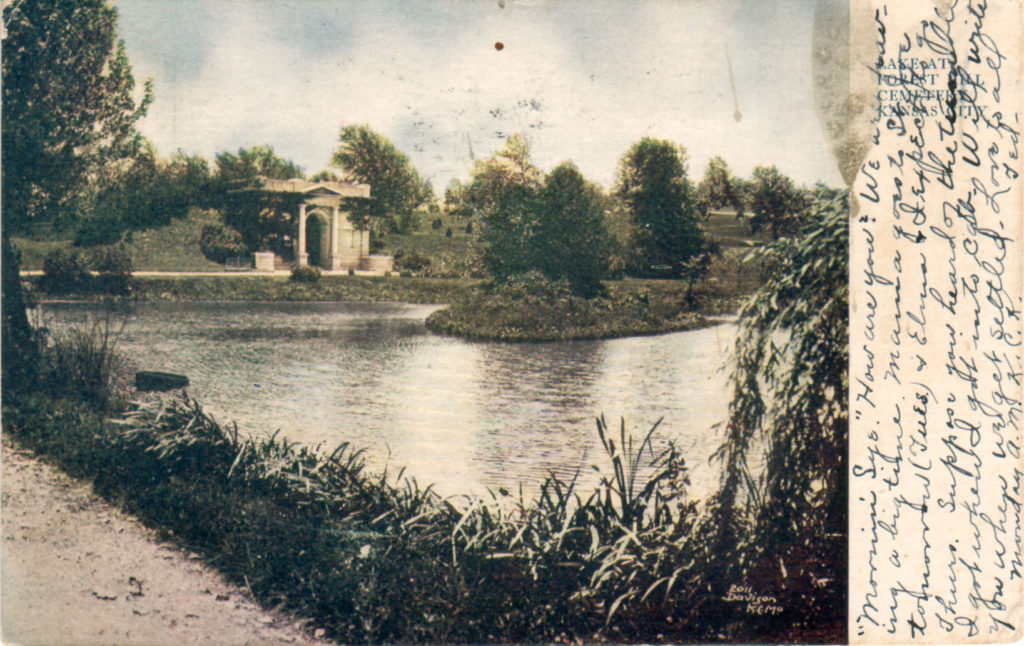By MICHAEL BUSHNELL
Northeast News
November 30, 2016
In 1888 when the Forest Hill Cemetery was incorporated, it lay outside the Kansas City limits at 69th Street and Troost Avenue. The limestone building shown in the postcard was the receiving vault.
Traditionally, graves were dug by hand, a procedure that was extremely labor intensive and virtually impossible during the long Midwest winters. So, the receiving vault was where bodies were kept when it was too cold for a hand-operated shovel to penetrate the frozen earth. Grave digging was resumed during the warmer months of spring and summer.
The lake shown in the card has been filled in and landscaped since then, leaving no trace of its whereabouts.
During the early part of the 20th century, a large abbey was built to house burial vaults for families. The abbey is of Roman Renaissance architecture and dominates the grounds, which were an integral part of the Battle of Westport in October 1864.
A marker placed by the Daughters of the Confederacy and titled “Shelby’s Last Stand” marks the area where Confederate Gen. Joseph Orville Shelby was forced back by Union generals Curtis and Pleasanton. Shelby used the stone fences running across the property for cover but was eventually outgunned and outnumbered by the advancing Union brigades. A memorial pays homage to 75 Confederate soldiers from Virginia, Texas, Missouri, Arkansas and Illinois who died during the siege and who are interred at Forest Hill.
Some notable Kansas Citians who are buried in Forest Hill include Boy Scout leader and former Kansas City Mayor H. Roe Bartle, baseball great Leroy “Satchel” Paige, and political boss Tom Pendergast, in addition to Confederate General Joseph Shelby.
Cemetery vaults held waiting bodies in historic cemetery
Related Posts
Townley Metal and Hardware
Michael BushnellPublisher Risqué postcards, like the one shown here, have been around for as long as postcards themselves. Prior to the advent of postcards as a private communication medium, those…
See Kansas in style, along the new Kansas Turnpike!
Michael BushnellPublisher This chrome-style postcard showcases one of the many service areas along the newly completed Kansas Turnpike. The Kansas Turnpike was the brainchild of two influential Kansans, who had…



















